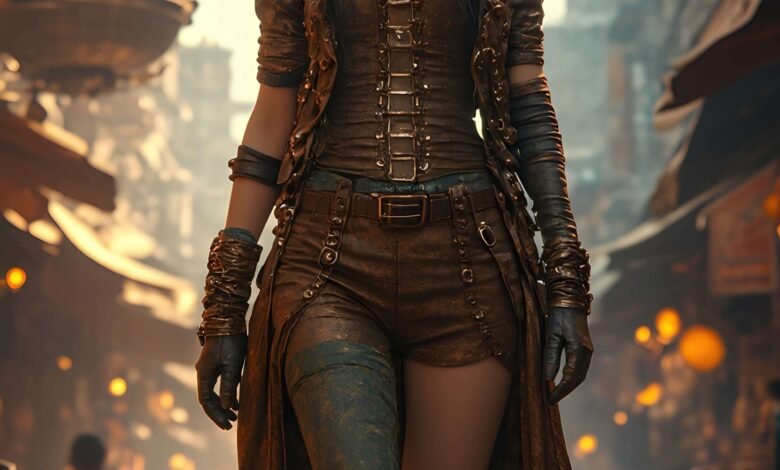How to Edit Images Using Multi-Input AI

In today’s digital creative landscape, over 37% of graphic designers have already integrated AI image generator tools into their workflows, marking a transformative shift in the industry. Yet, many professionals still grapple with time-consuming manual editing processes and creative roadblocks that can turn simple design tasks into lengthy ordeals. Enter multi-input AI image editing – a groundbreaking approach that’s revolutionizing how designers work with visual content. By combining multiple reference images, text prompts, and style parameters, this technology empowers creators to achieve in minutes what once took hours. Whether you’re a seasoned designer or just starting out, understanding multi-input AI isn’t just about staying current – it’s about unlocking unprecedented creative possibilities while dramatically streamlining your workflow. The ability to seamlessly blend different visual elements, maintain consistent styling across projects, and rapidly iterate on concepts is transforming the very nature of digital design work.
Understanding Multi-Input AI Image Generation
Multi-input AI represents a sophisticated evolution in image generation technology, allowing users to combine multiple reference images, text descriptions, and style parameters simultaneously. Unlike traditional single-prompt generators that rely solely on text descriptions, multi-input systems leverage advanced neural networks to analyze and synthesize multiple visual and textual inputs coherently. These systems excel in three core capabilities: style fusion, which seamlessly blends artistic elements from different sources; object compositing, which intelligently combines elements while maintaining natural proportions and lighting; and contextual blending, which ensures harmonious integration of all components. The technical foundation rests on a combination of Generative Adversarial Networks (GANs) and diffusion models, working in concert to deconstruct and reconstruct images while preserving the intended creative vision. In professional design workflows, this technology proves invaluable for tasks ranging from product visualization and brand asset creation to complex architectural renderings and fashion design concepts. Designers can now rapidly prototype multiple variations of a concept by adjusting input parameters rather than manually creating each iteration, fundamentally transforming the creative process.
Top AI Image Generator Tools for Multi-Input Editing
Feature Comparison: Midjourney vs. DALL-E 3 vs. Adobe Firefly
Each leading AI image generator offers distinct advantages for multi-input editing. Midjourney excels in artistic interpretation, allowing unlimited image references and detailed style mixing through its /blend command. DALL-E 3 provides superior natural language understanding and maintains exceptional consistency between input images and generated outputs, though it currently limits users to single image uploads. Emerging platforms like Kling AI are revolutionizing the space with innovative approaches to multi-input processing, while Adobe Firefly stands out with its seamless Creative Cloud integration and specialized features like generative fill, supporting up to five simultaneous image inputs with precise control over each element’s influence. For team environments, Firefly offers robust collaboration tools including shared asset libraries and version control, while Midjourney facilitates real-time experimentation through its Discord interface. DALL-E 3’s API provides the most flexibility for custom workflow integration.
Emerging Specialized Tools
Beyond the major platforms, specialized tools are reshaping specific design niches. ComposerAI focuses exclusively on product photography, allowing designers to generate professional product shots by combining multiple reference images with environmental contexts. StyleSync specializes in brand consistency, using proprietary algorithms to ensure all generated assets match existing brand guidelines. These tools often feature direct plugins for Adobe Creative Cloud, enabling designers to maintain their familiar workspace while leveraging AI capabilities. Notable mentions include PatternAI for seamless texture generation and MockupMaster for rapid product visualization, both offering sophisticated multi-input capabilities tailored to their specific use cases.
Step-by-Step: Advanced Image Editing with Multi-Input AI
Preparation: Sourcing and Optimizing Input Images
Before diving into multi-input AI editing, carefully select images that share compatible lighting conditions and perspectives. Source high-resolution images (minimum 1024×1024 pixels) in PNG or JPEG format, ensuring each element contributes meaningfully to your final composition. Create clean masks using professional tools like Photoshop’s Quick Selection or specialized AI masking tools, focusing on precise edge definition for seamless integration.
Workflow Walkthrough: Creating Composite Designs
Consider a product photography scenario: combining a leather bag with a Parisian café backdrop. Start by uploading your masked product shot and reference environment. Craft detailed prompts that specify lighting direction, time of day, and atmospheric conditions matching your product image. For example, “morning sunlight casting soft shadows, warm ambient lighting, subtle depth of field.” Implement progressive iterations, adjusting parameters like composition weight (30-70% between elements) and style influence. Monitor consistency in shadows, reflections, and perspective alignment between iterations.
Post-Generation Refinement
Once you’ve generated your composite, utilize AI-powered inpainting to seamlessly extend backgrounds or fix inconsistencies. Apply selective color grading to harmonize product and environment tones, ensuring natural integration. For maximum quality, implement super-resolution enhancement selectively on key focal areas while maintaining original textures. Address any perspective discrepancies using AI-assisted perspective correction tools, and fine-tune details like shadow interaction between elements for photorealistic results. Establish a systematic review process focusing on lighting consistency, perspective accuracy, and natural element integration.
Creative Applications for Graphic Designers
Multi-input AI revolutionizes brand identity development by enabling designers to generate cohesive logo variations while maintaining brand consistency. Designers can combine existing brand elements with new artistic directions to explore fresh interpretations of established identities. In marketing material creation, the technology streamlines the production of social media assets by allowing simultaneous style application across multiple formats while preserving brand guidelines. For ad variations, designers can quickly test different visual approaches by mixing product imagery with various contextual elements and artistic styles. The rapid prototyping capabilities transform concept visualization, enabling designers to present clients with multiple sophisticated options in record time by combining reference images from successful campaigns with new creative directions. Style exploration reaches new heights as designers can seamlessly blend elements from different historical art movements, creating unique hybrid aesthetics. For instance, merging Art Nouveau decorative elements with contemporary minimalist design principles, or infusing traditional Japanese woodblock printing techniques into modern digital illustrations. This unprecedented ability to mix and match visual elements while maintaining professional quality opens new avenues for creative expression and commercial applications.
Optimizing Your Multi-Input AI Workflow
Successful multi-input AI image editing relies on structured approaches to prompt engineering and quality management. Begin prompts with core subject descriptors, followed by style modifiers, and end with technical specifications like “high detail” or “photorealistic rendering.” Implement a three-stage quality control process: first, verify technical aspects like resolution and composition; second, assess style consistency and lighting integration; third, validate brand alignment and creative objectives. For version control, establish a systematic naming convention incorporating project phase, iteration number, and key parameters used. Create separate folders for input assets, generated variations, and final selections. When working with copyrighted material, maintain detailed records of usage rights and transformative aspects. Practice transparency by documenting AI involvement in client deliverables and establishing clear boundaries between human and AI contributions. Consider developing internal guidelines for acceptable AI usage levels in different project types, ensuring consistent quality standards across team members while maintaining creative authenticity.
The Future of AI-Powered Design Innovation
Multi-input AI has fundamentally transformed the landscape of digital image editing, offering designers unprecedented control and efficiency in their creative workflows. By combining multiple reference images, text prompts, and style parameters, professionals can now achieve complex visual compositions in minutes rather than hours. The technology’s impact extends beyond mere time savings – it’s reshaping how we approach creative problem-solving and visual storytelling. As these tools continue to evolve, the key to success lies in striking the perfect balance between AI capabilities and human creative intuition. Start small by experimenting with basic composites, then gradually incorporate more complex multi-input techniques as your confidence grows. Whether you’re enhancing product photography, developing brand assets, or exploring new artistic directions, the future of design increasingly lies in mastering these AI-powered workflows. The creative industry stands at the threshold of a new era where the synergy between human vision and artificial intelligence will drive unprecedented innovation in visual communication.




